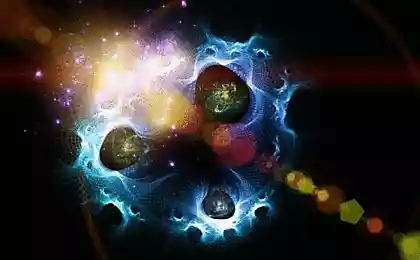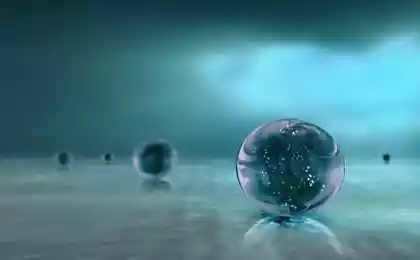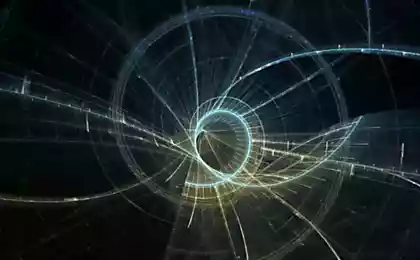950
Understanding quantum chromodynamics help collider experiments

The interaction in the high-energy particle collider produced a huge variety of particle
This process is called a multiple birth, and its various characteristics predicted by the theory of strong interactions - quantum chromodynamics (QCD). However, recent experiments like the LHC (Large Hadron Collider) do not coincide with the predictions of models based on the results of previous experiments in other accelerators. On the possible causes of this discrepancy, and opening new horizons of Experimental High Energy Physics at the conference by Ginzburg told the professor at the University of Bristol and one of the leading experts in the study of multiple particle Nick Brooke.
For the identification of the produced particles is ideal machinery of the two pilot projects taking place in the LHC. This project ALICE (A Large Ion Collider Experiment), optimized to study collisions of heavy ions, and LHCb, dedicated to the study of B-mesons - particles containing "charming" quark. But she had information about the birth of particles is a necessary foundation for the further development of quantum chromodynamics. Nick Brooke commented: "The observed distribution of the particles is characterized hadron state of matter, and are sensitive to the underlying proton-proton interactions, quantum chromodynamics. ALICE, ATLAS and CMS have measured the distribution of particles in the central region of interaction, and LHCb geometry allows you to track the dynamics of the collision in the remote area. This gives us much needed information for the development of models and improving the Monte Carlo event generators ».
Quantum chromodynamics appeared in the 70s of the last century as a microscopic theory that describes the strong interaction at subhadronic scale, involving quarks, gluons and composed of these particles - hadrons, including those related to the strong interaction of the protons and neutrons of the atomic nucleus. The basic postulate of quantum chromodynamics attributes all quarks special quantum number, called color charge or color. Such familiar word has nothing to do with the usual optical properties, but succinctly highlights the fact that the nature of quarks are found only in colorless combinations - hadrons composed of three quarks (recall the analogy: red, green, and blue add up to white) or gluons out of a quark and an antiquark anticolours.
QCD predictions about the parameters of multiple particle production are either in analytical form or in the form of numerical computer model calculations Monte Carlo, which can detail compared with experimental data. These models are called event generators, in the sense that the probability of occurrence of certain events in the computer calculations considered proportional to the probability of the corresponding event in the real world. All these models have worked well in accordance with previous experiments on other accelerators, and even had some predictive power, but they do not coincide with the new results obtained at the LHC.
Commented Professor Lebedev Physical Institute and lead researcher of the Sector of High Energy Physics Andrei Leonidov: "The study of multiple production at high energies - is one of the fundamental physical problems, and the report was devoted to Brooke array of experimental data that has been accumulated at the collider LHC. It has developed a very interesting situation: the existing models do not describe many of the essential properties of the event. In a typical construction of somehow stitched physics of soft hadron jets and the hadron radiation hard, and they have been calibrated to successfully describe FNAL, the previous accelerator. As a result of this report it was not just a single chart, which coincided with the new theory experiment. That is, many of the properties of multiple production of current models do not describe at all ».
So, Professor Brook spoke about the differences of predictions with real data on the occurrence of particles from "strange" quarks in the composition or irregularities in the ratio of baryons and antibaryons matter. But all these inconsistencies, as emphasized by Brooke, just untie the hands of researchers, and once again show the complex structure of QCD. After all, the new data may help to improve the model of the events, the production of soft particles multiparticulate collisions and many other phenomena.
With optimism British physicist Andrei Leonidov agrees: "All of the previous model in the new experiments have proven unsuccessful in varying degrees, and this creates an interesting field to explore. But these same models are not just gathered: it is - the best that humanity has to offer on this topic. Not that any provincial people something they have written, and it is used by accident at the LHC. The LHC uses the best there is, and it works best is important. But this theme is very important because of multiple production processes are constantly taking place in the collider. It is the dominant processes with a large cross section, and they potentially affect all other processes that determine their background. In addition, it is fundamental and interesting. So there is nothing sad, waiting for new results! ».

In a collision of high-energy particles observed multiple production of new particles























